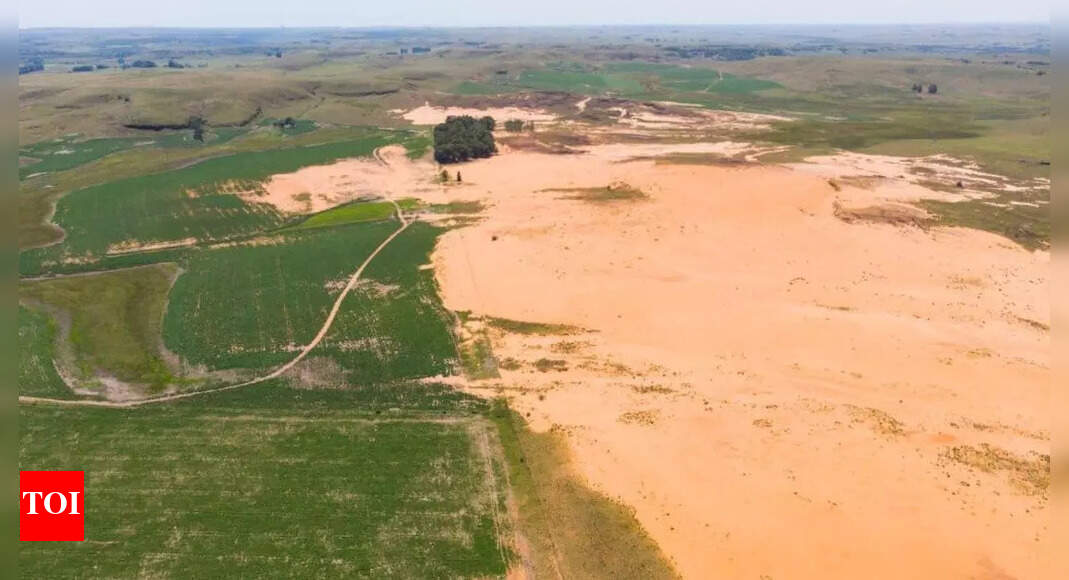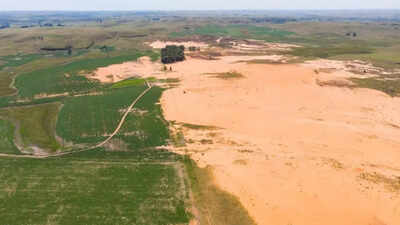In a dramatic geological change, researchers have discovered that areas of South Africa are rising by as much as 2 millimeters annually. Although this movement was originally thought to be caused by deep mantle processes below the Earth’s surface, recent studies indicate a more proximate, surface-based cause: the removal of groundwater. Extended drought has caused extensive groundwater loss, lessening the load on the Earth’s crust and allowing it to gradually rise. This finding demonstrates the larger geophysical effect of climate change and drought, revealing that even changes in the water table can quietly remake the Earth’s surface.
New study reveals how droughts cause Earth’s crust to ‘spring back’ in South Africa
A revolutionary study conducted by researchers at the University of Bonn revealed that the apparent “bulging” of the Earth’s crust in South Africa is not the result of volcanic or tectonic activity. Instead, it’s the crust reacting to a massive loss of groundwater. When droughts become more severe, the weight of water stored in soil and aquifers vanishes, leading the Earth’s crust to rise—a process previously misunderstood by geologists.To comprehend this phenomenon, consider compressing a foam ball. Under pressure, the ball compacts; upon pressure release, it returns to its original form. In the same way, the Earth’s crust is elastic. When groundwater is drained, the weight bearing down upon the crust lessens and the crust “springs back” partially. This is called elastic rebound—a recognized geophysical response but infrequently ascribed to drought to this degree prior to the present research.
GPS and satellite data link drought to ground rise in South Africa
Between 2012 and 2020, a GPS array of South African stations had measured vertical land movements up to 6 millimeters. At first mystifying scientists, the observation later led to the development of a new paradigm regarding what was happening below the ground. The GPS data provided precise and reliable observations of vertical displacement, in conflict with the usual expectations regarding deep Earth processes in the area.Findings by NASA’s GRACE (Gravity Recovery and Climate Experiment) satellite mission also corroborated the findings. GRACE tracks changes in Earth’s gravity field, which can be converted into changes in mass—such as water. Satellite observations independently confirmed a loss of mass where drought was most extreme, namely in soil moisture and groundwater storage. These areas corresponded to the same places where ground uplift had been recorded by GPS, ensuring there to be a close cause-and-effect connection.
New findings show drought causes land uplift, not volcanic activity
Geophysicists long speculated that rising landmasses in south Africa were being induced by mantle plumes—pipes of hot rock forced upward from below the ground. But the new evidence indicates massive uplift can take place with not even the slightest deep volcanic or tectonic ructions. This is a paradigm shift at the very root of surface deformation science, especially in regions previously considered geologically dormant.The 2015–2019 Cape Town drought had the city hanging in the balance on the eve of “Day Zero”—when municipal water taps would be shut. During that period, researchers noted the most extreme land uplifts ever in the Western Cape. This spatial-time coincidence bears witness to how close the severity of drought and ground deformation are.One of the most significant potential applications of this research is its use in groundwater monitoring. Since land uplift is linearly proportional to water loss, scientists can now use ground vertical motion as a non-destructive and inexpensive alternative for water level measurement. No drilling into the earth is required using this approach, allowing real-time analysis through satellite and GPS.
New study shows how climate-driven droughts impact
With climate change fueling increased and intensified droughts around the world—from California to the Horn of Africa—the results from South Africa may have far-reaching consequences. This work offers a fresh paradigm for viewing how water poverty impacts the crust of the Earth and presents an important tool for monitoring hydrologic change in risk-prone areas.Also Read | This 400-year-old Catholic saint’s body has amazed scientists with its preservation; discover the science behind












